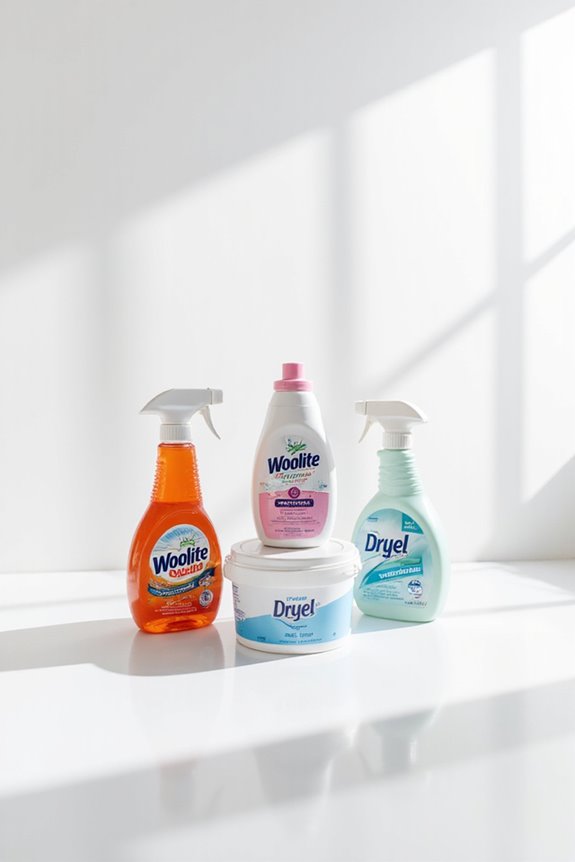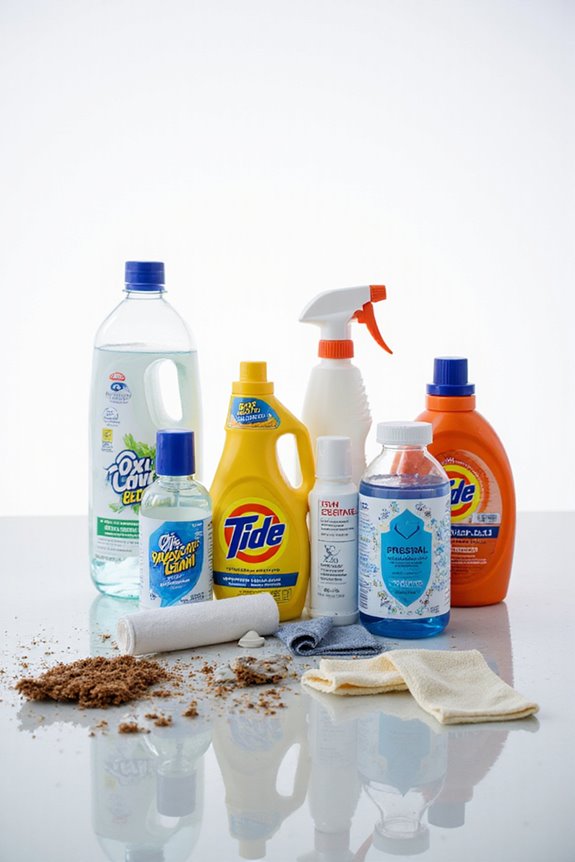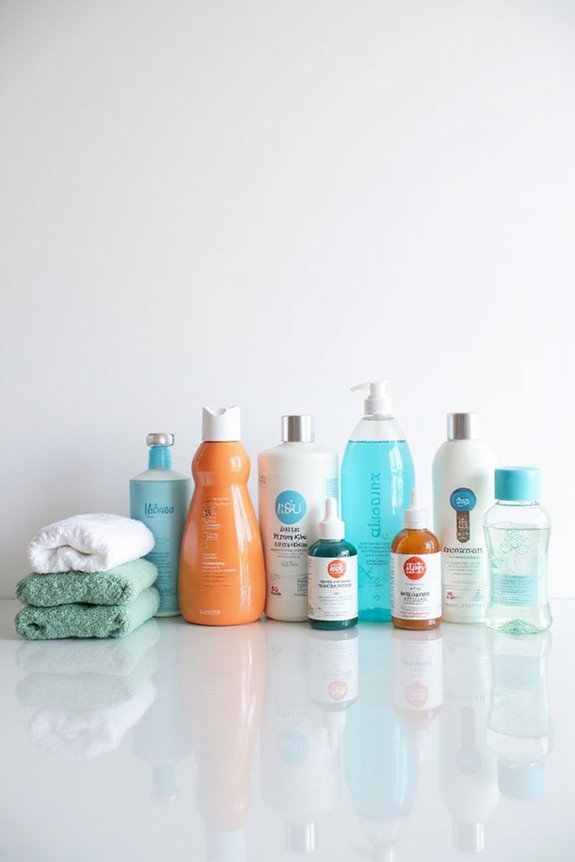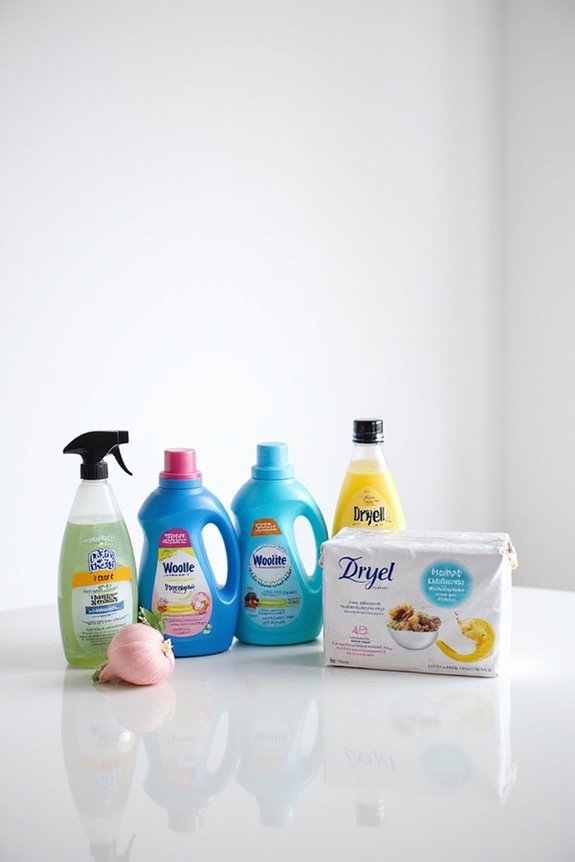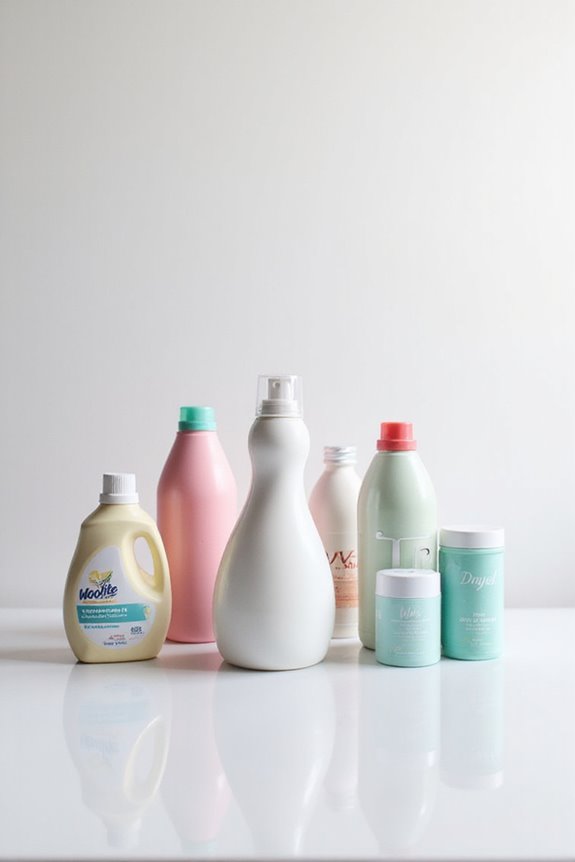When we tackle stains, we often make common mistakes that can sabotage our efforts. For starters, using the wrong water temperature can make or break our stain-fighting game. We shouldn’t overuse stain removers, as that can damage fabrics. Misapplying them and scrubbing instead of blotting? Big no-no! Plus, let’s not mix chemicals — it’s not a science experiment! If only we could remember to test on hidden areas first! Keep at it, and you’ll learn more tips to conquer those pesky stains.
Key Takeaways
- Failing to identify the stain type can lead to using the wrong removal technique, making stains harder to remove.
- Not testing stain removers on hidden areas may result in damage or discoloration to fabrics or surfaces.
- Overusing or misapplying stain removers can weaken fabric fibers and leave harmful residues.
- Mixing different stain removal chemicals can create toxic fumes and reduce effectiveness; stick to one product at a time.
- Ignoring water temperature guidelines can hinder stain removal; use cold water for protein stains and hot water for grease stains.
Using Incorrect Water Temperature
When it comes to tackling stains, one of the biggest mistakes we can make is using the wrong water temperature. We’ve all been there—trying to get out a stubborn stain only to find it’s set in worse than ever. For protein-based stains like blood, cold water is our best friend. It prevents those pesky proteins from binding to the fabric. On the flip side, oil and grease love hot water, which breaks them down for easy removal. And for tricky stains like red wine or spaghetti sauce, a cold rinse followed by a hot wash can do wonders. So, let’s remember: matching the water temperature to the stain types is key to keeping our clothes looking fresh! Additionally, using hot water around 130F (54C) is most effective for breaking down oils in greasy stains.
Overuse and Misapplication of Stain Removers
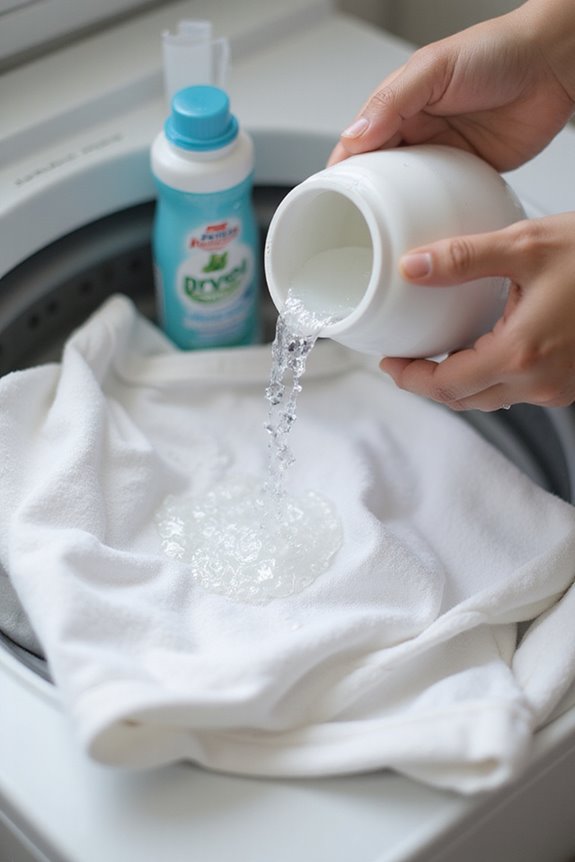
While we all want to banish stains from our favorite clothes, overusing or misapplying stain removers can lead to more harm than good. We might think that excessive application will do the trick, but it doesn’t enhance stain removal. Instead, it can weaken fibers and fade colors, making our clothes look worse. Plus, leftover chemicals can irritate our skin, and no one wants that!
Let’s not forget that misapplication can trigger unexpected chemical reactions, which might be harmful. It’s crucial to follow instructions and use the right amount. If a stain remover says “a little goes a long way,” let’s believe it. We want our clothes clean and safe, not stiff and damaged! Additionally, using enzyme-powered detergents can significantly improve stain removal effectiveness without the need for excessive application.
Improper Mechanical Action on Stains
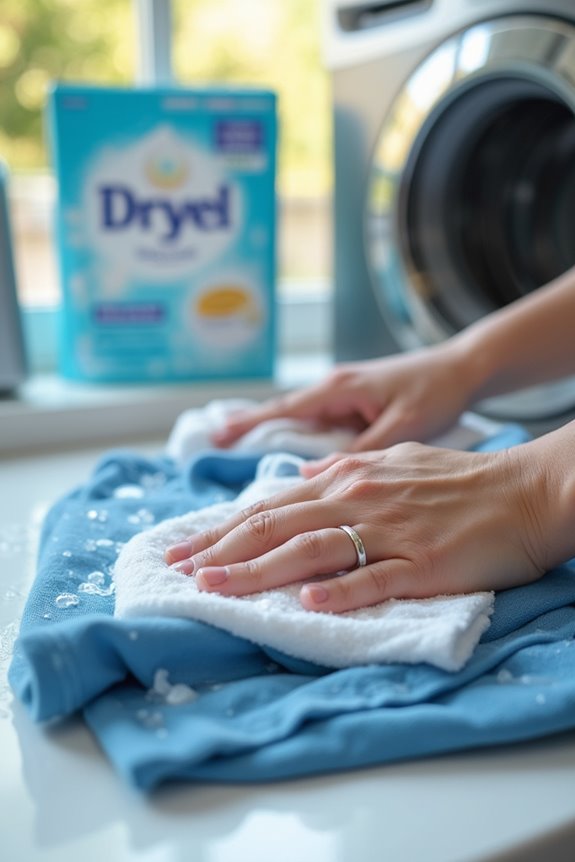
Improper mechanical action on stains can really mess things up, especially if we’re not careful. Using too much mechanical force can lead to fabric damage, making our favorite clothes look worse instead of better. We need to remember that different stain types require different gentle actions. For instance, scrubbing aggressively on delicate fabrics can ruin their integrity. That’s why training is so important! We must learn the right mechanical methods and how to apply them without causing harm. A little patience goes a long way. Sometimes, letting a stain soak and then gently agitating it works wonders without risking damage. Additionally, using enzyme-based stain removers can enhance effectiveness while minimizing the need for harsh scrubbing. So, let’s take our time and treat our fabrics with the care they deserve!
Mixing Different Stain Removal Chemicals
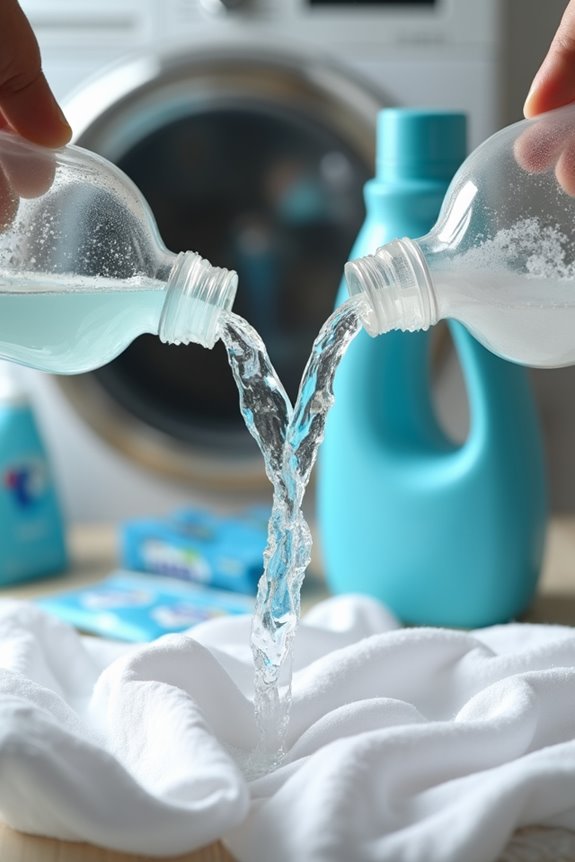
After we’ve tackled the importance of using the right mechanical action on stains, it’s time to chat about another common pitfall: mixing different stain removal chemicals. Many of us might think combining products can boost effectiveness, but that’s not always true. In fact, poor chemical compatibility can release toxic fumes. For instance, mixing bleach and ammonia creates chloramine gas, which is no joke. It can lead to respiratory issues and eye irritation. We should stick to one product at a time, testing it first on a hidden area. If we’re unsure, it’s better to call in the pros. Trust us, avoiding dangerous combinations will save our health—and our fabrics!
Delayed Treatment of Stains

When we let stains sit, they tend to become our worst enemies. Delayed treatment allows stains to solidify, making them much harder to remove. We’ve all experienced that moment when a fresh coffee spill turns into a permanent mark. Prompt action is essential for stain prevention. If we don’t act quickly, stains can penetrate deeply, damaging the fibers and leading to costly repairs. They can even attract dirt, making our favorite items look dingy. Remember, immediate blotting and using the right cleaning solutions help keep our fabrics looking fresh. It’s way easier to tackle a stain right away than to face the consequences later. Additionally, using a detergent designed for tannin stains can significantly improve your chances of successful removal. Let’s not wait too long—our carpets and clothes will thank us!
Attacking Stains From the Center Instead of Edges
Attacking stains from the center might seem like a quick fix, but it often backfires on us. When we focus on the center, we can actually cause the stain to spread outward, making things worse. The edges of the stain usually hold the pigment more tightly, so using the edge technique helps with stain containment. By starting at the edges and working our way in, we can lift the stain gradually without pushing it deeper into the fabric. It’s like a gentle dance, not a wrestling match! We should use absorbent pads and change them often to avoid redepositing residues. Remember, slow and steady wins the race in stain removal, so let’s be patient and precise! Additionally, using enzyme-based products can enhance our effectiveness in breaking down stains without damaging the fabric.
Ignoring Fabric Care Labels
Many of us have been there: we spill something and rush to clean it up, only to ignore the all-important fabric care label. It’s easy to forget, but these labels are essential for proper fabric maintenance. They guide us on the right washing methods and stain removers to use. Ignoring them can lead to shrinking, fading, or even ruining our favorite clothes. For instance, using bleach on a colored shirt might turn it into a tie-dye disaster. By following the care label instructions, we guarantee our garments stay looking great and last longer. Additionally, using the wrong detergent can also compromise cleaning effectiveness, especially with stain type specificity. So, let’s take a moment to check those labels. Trust me, our clothes will thank us later!
Not Testing Stain Removers on a Hidden Area
How often do we dive right into using a stain remover without a second thought? We’ve all been there, but skipping the vital step of testing stain removers on a hidden area can lead to disaster. By using testing techniques on a small, inconspicuous spot, we can check for fabric compatibility and avoid permanent discoloration or fabric damage. Remember, different products react uniquely with fabrics, and some may even weaken the fibers! Let’s not risk ruining our favorite shirt. Take a moment to apply the remover, wait, and inspect for any changes. If all looks good, then we’re in the clear! A little patience now can save us time, money, and heartache later.
Failing to Blot Instead of Scrub
After taking the time to test stain removers on a hidden area, it’s easy to feel confident about tackling the stain. But here’s the catch: we often forget to use proper blotting techniques and end up scrubbing instead. Scrubbing might seem effective, but it can actually push stain particles deeper and damage the fabric. We want to avoid that! Instead, let’s stick to blotting, which is gentler and helps with stain absorption. By dabbing the area gently, we can contain the stain and allow cleaning solutions to work their magic. Remember, it’s all about keeping those fibers intact and preventing the stain from spreading. So, let’s grab a clean cloth and start blotting!
Assuming All Stains Require the Same Treatment
When it comes to tackling stains, we can’t just assume that every spot needs the same treatment. Different stains call for specific removal techniques. For instance, oil-based stains need solvent removers, while water-soluble stains respond better to water-based options. It’s essential to start with stain identification—knowing if it’s from coffee, grease, or ink can save us a lot of trouble.
Using the wrong remover can lead to incomplete cleaning or even damage. For example, protein stains like blood work best with enzymatic products. So, let’s avoid the one-size-fits-all approach! Testing a remover on a hidden area is a smart move. By matching the right product to the stain, we’ll achieve better results without risking our surfaces.
Frequently Asked Questions
How Can I Identify the Type of Stain on My Fabric?
To identify the stain on our fabric, we can use stain identification techniques like visual inspection and touch tests. Fabric testing methods, such as the swab test, help determine the best cleaning approach for removal.
What Should I Do if a Stain Reappears After Treatment?
If we notice reappearing stains after treatment, let’s re-clean using appropriate products, extract moisture thoroughly, and allow drying time. Regular professional help can guarantee we tackle those stubborn stains effectively and prevent their return.
Are There Natural Alternatives to Chemical Stain Removers?
Absolutely, there are plenty of natural alternatives to chemical stain removers! We can explore eco-friendly solutions like baking soda, vinegar, and olive oil-based soaps that effectively tackle stains while being gentle on our environment.
How Can I Prevent Future Stains From Setting?
Like a shield against arrows, we can use stain prevention tips and fabric protection to guard our clothes. Wearing aprons, choosing stain-resistant fabrics, and treating spills immediately helps keep our garments looking fresh and clean.
What Materials Are Most Resistant to Staining?
When it comes to stain resistant fabrics, we’ve found that polyester, microfiber, and wool stand out. Utilizing proper cleaning techniques helps maintain their resistance, ensuring our upholstery and rugs remain looking great for longer.

